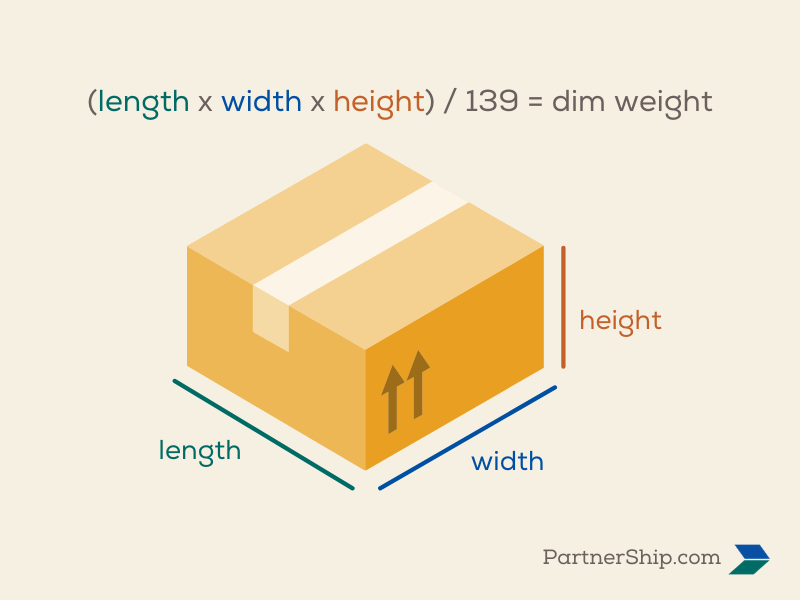Your Essential Guide to the 2025 FedEx and UPS Rate Increases
10/25/2024 — Leah Palnik

Shipping in 2025 is about to get more expensive. FedEx and UPS are both increasing their rates by an average of 5.9%. But don’t let that number fool you — your actual costs will likely climb even higher. With UPS leading the charge on December 23, and FedEx following two weeks later, these increases will have a significant impact for shippers. The real challenge lies in the hidden complexities behind the changes. It’s essential to understand them so you know how your costs will be affected and what you can do about it.
Here's your guide to the FedEx and UPS rate increases for 2025. Jump to:
- A look back at the FedEx and UPS GRIs
- Important changes for 2025
- How the FedEx and UPS rate changes will affect your costs in 2025
- What you can do to mitigate the effects of the FedEx and UPS rate increases
A look back at the FedEx and UPS GRIs
FedEx and UPS have a long history of mirroring each other’s pricing. They typically announce the same general rate increase (GRI) and appear to have very similar pricing strategies. Bottom line, the published rates aren’t a major differentiator between the two carriers.For several years, FedEx and UPS held steady at a 4.9% increase. Then the pandemic shook things up in 2022, driving the GRI up to 5.9%. The following year, in 2023, it climbed even higher to 6.9%, as demand surges stretched shipping networks to their limits. Demand began to soften going into 2024, which brought the GRI back down. The 5.9% GRI for 2025 matches last year’s and isn’t surprising, given the current market conditions.
Some important quick facts about the new FedEx and UPS rates:
- The new FedEx rates take effect on January 6, 2025, while the UPS rates take effect two weeks earlier on December 23, 2024. Notably, UPS is raising their rates sooner, capturing more shipments moving through the end of peak season.
- The 5.9% average doesn’t take surcharges into account - many of which are increasing by more than 5.9%.
- How much your costs actually go up in 2025 will depend on several different factors. The services you use, your shipment dimensions and weight, and how far your shipments are traveling all have an effect.
Important changes for 2025
So you already understand that FedEx and UPS rates are going up in the new year. What does that look like exactly? First, you'll want to review the released service guide previews:If all of those tables and numbers have you overwhelmed, you're not alone. But there are some key takeaways. Let’s take a look at a few of the general observations from the base rate changes:
- Two-day air services are increasing higher than 5.9%, while next-day and overnight services are closer to the announced average.
- Ground commercial services are seeing higher increases for those packages being delivered longer distances. On the flip side, those packages traveling to shorter zones will see increases more in line with the average.
- The rates for lighter-weight packages using ground commercial services are rising less than 5.9%. Conversely, heavier packages using ground commercial services are seeing increases that exceed the average.
When you are reviewing your shipping costs, you can’t look at the base rates alone. Surcharge fees often make up a significant chunk of the amount you end up paying. Here are a few noteworthy surcharge updates:
- Fees for larger, more difficult-to-move packages continue to rise to hefty prices. These fees are already very costly, and in 2025 they're rising significantly higher than the GRI and other surcharges.
- UPS is introducing a new surcharge for customers who pay by credit card. This addition goes into effect ahead of the GRI on October 26, 2024. The charge is 2% of the total amount paid via credit card.
- Many other common surcharges are increasing by more than the 5.9% GRI, including Delivery Area and Residential surcharges.
There are also a few other changes that are important to be aware of:
- The minimum charge for both carriers is increasing from $10.70 to $11.32. If you have discounts on your account, this heads-up is for you. Even if your discount would bring you to a base rate that's lower, you're stuck paying the minimum of $11.32 instead.
- Effective October 26, 2024, UPS is changing the list of zip codes for zones and the Delivery Area Surcharge. Depending on where you’re shipping, you may have to pay based on a longer zone than before. On top of that, you could get hit with a Delivery Area Surcharge on a shipment that it didn’t apply to in the past. It’s changes like these that make budgeting for your annual cost increase very challenging.
- Effective January 27, 2025, UPS is updating how it calculates its Large Package Surcharge and Additional Handling Charge. The Large Package Surcharge will be determined using revised calculations based on either length, weight, or cubic volume. For the Additional Handling Charge, it will be determined according to cubic volume and be subject to a 40 lb minimum billable weight. The changes could drive your costs up, and cause some shipments to qualify for those surcharges when they haven't in the past.
How the FedEx and UPS rate changes will affect your costs in 2025
You can’t take the announcement of a 5.9% increase at face value, unfortunately. You’ll need to determine which services you use the most, how far your shipments travel on average, and how much of your invoice charges can be attributed to fees.Most shippers will see their costs go up over the announced 5.9% average. With that in mind, let’s look at a few factors that could put you at risk for higher-than-average cost increases:
- If you’re shipping larger packages or your packages require special handling. For the past several years, FedEx and UPS have been raising these fees at an alarming rate. 2025 is no different. Any shipment they can’t run through their normal systems costs them more time and money, and these fees are a way to discourage those types of shipments from entering their networks.
- If you’re relying on Express/Air services for two-day deliveries. The carriers are raising rates more aggressively on Express/Air services for two-day deliveries. Why? More and more, consumers expect to be able to order something and receive it within two days. FedEx and UPS know this is important to shippers who want to keep their customers happy.
- If you ship a lot of Ground packages that travel further distances. Not only are these base rates increasing higher than average, but if you are using UPS they could also be bumped into the next zone. Since UPS updated the list of zip codes for zones, you may have to pay based on a further zone than before.
- If you ship a lot of low-density packages. This is no different than the past several years but is important nonetheless. The pricing structure that FedEx and UPS have in place dissuades larger, lighter shipments. The carriers prefer denser packages that take up less space because they’re able to fit more packages on their delivery vehicles. If your package dimensions cause your shipment to be rated at a higher weight due to dimensional (DIM) weight pricing, your cost increase could be compounded. Many of the higher weight breaks are getting hit the hardest with increases over the average this year.
What you can do to mitigate the effects of the FedEx and UPS rate increases
- Right-size your packaging. While FedEx and UPS rates are based on weight, that’s not actually the whole story. If your dimensional weight is higher than the actual weight, your package will be rated using the dimensional weight - meaning you’ll be paying more. This makes any excess space within your package extra costly. Focus on packaging that allows space for the items you’re shipping and the necessary cushioning and nothing more.
- Consider opening or using a new distribution center. Shipments with the longest distance to travel cost you the most in general. But in 2025, this will be even more important as the longest zones are seeing the highest increases. Getting closer to your customers could be a great strategy for keeping those costs down.
- Evaluate the services you’re using. Ground services are the more economical option and often the transit times are comparable to what you can get with some Express/Air services. Where you can, utilize Ground services to save on your costs.
- Take advantage of the discounts available to you. Thanks to our unique alliance with FedEx, PartnerShip is able to provide your business with industry-leading discounts. Small and mid-sized businesses can enjoy competitive pricing that is typically reserved for high volume shippers - without any minimum shipping requirements. Save at least 40% off FedEx Express, at least 25% off FedEx Ground, and at least 15% off Residential and Delivery Area surcharges. Enroll today to access the discounts.

Wrapping your head around all of the changes for 2025 FedEx and UPS rates can be challenging. But, using this guide to understand what's behind the announced average and published service guides is a good first step. Use this information to properly budget for the new year and set up any mitigation tactics that work best for your business.




